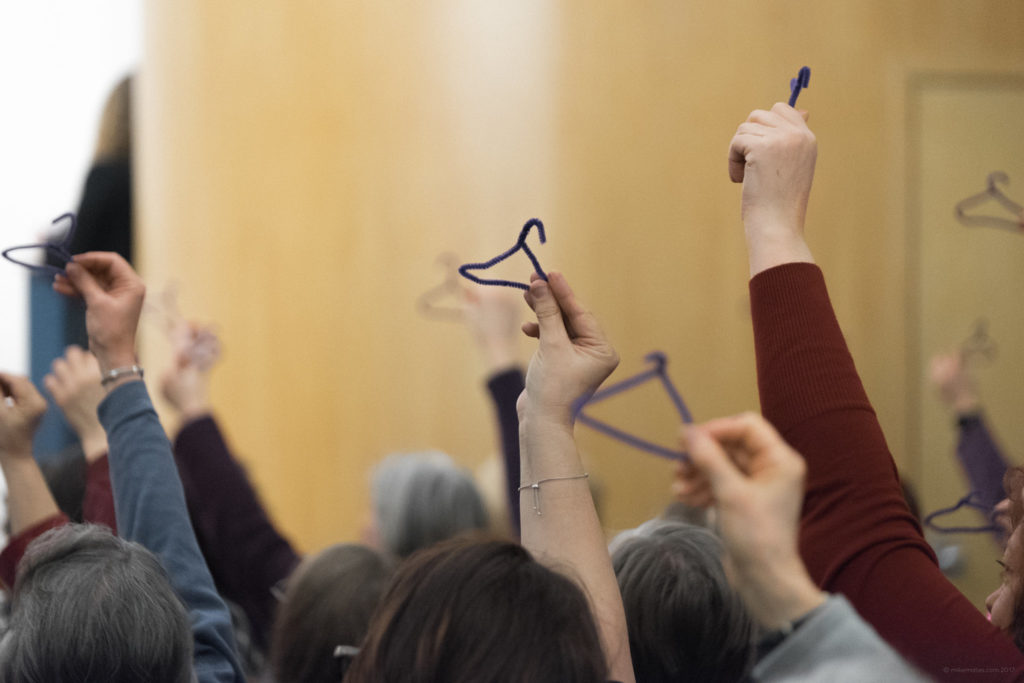Eve was 19 when she was raped by a family friend after months of harassment. She did not report her assault to the police, family or friends. In her conservative community, she had little access to reproductive health information or services before or after her rape.
After missing her period, Eve suspected she was pregnant. Her fears were confirmed by a blood test at a community health center. Not knowing what else to do, Eve confided to her assailant that she was pregnant. He told her to get an abortion. Despite the legal limitations on abortion, he told her, “you are not the first woman.” He gave her some cash and put her on a bus to visit a “natural medicine doctor.”
Once there, Eve removed her clothes before a woman inserted a speculum and an iron rod into her vagina, moving it back and forth inside her. After returning home, she became unwell. She felt feverish and began passing dark, fetid clots of blood. Recognizing that Eve was gravely ill, her brother took her to a local nurse who provided post-abortion care. She was diagnosed with sepsis and a perforated uterus—common complications from unsafe abortion. After uterine surgery and two weeks in the hospital, Eve was discharged.
Since hearing Eve’s story, I have retold it countless times. As a professor of public health, I’ve used her case as a teaching exercise, always leaving out one important detail—Eve’s location.

Access to abortion varies widely around the world. In most countries, abortion is available upon request, though gestation limits vary; in other places, abortions are available based on broad social or economic grounds, or to preserve the health or life of the pregnant person. But the procedure is also banned under all circumstances for 90 million women living in 26 countries.
The UN has affirmed that access to abortion is part of a set of comprehensive sexual and reproductive health and rights. Yet the debate over whether and when abortion should be available to women wages on, most recently taking the form of a wave of early abortion bans across the U.S.—policies UN Deputy High Commissioner for Human Rights Kate Gilmore has called discriminatory and extremist.
Eve’s experience—and her ability to legally access abortion services—was largely determined by her geographic location. In my teaching exercise, I ask students to identify the missed opportunities for public health and legal intervention in Eve’s case. They rattle off a host of issues: harassment and coercion pointing to the need for education on healthy relationships; gender-based violence and impunity for Eve’s assailant; the need for social support and mental health services following her assault; and the lack of access to sexual and reproductive health information and services including emergency contraception, abortion and post abortion care.
Eventually I reveal Eve’s true location: Nicaragua, where 65 percent of pregnancies are unplanned, rape is endemic with most rapes committed by a known acquaintance and pregnant people are criminalized for seeking abortions, as are the health providers performing them. The UN has called on Nicaragua to decriminalize abortion on numerous occasions; a case similar to Eve’s is currently pending before the UN human rights commission.
People in other settings are experiencing a functional abortion ban as a result of U.S. foreign policy. The Global Gag Rule limits NGOs from using their own funds to provide abortion information, referrals or services. The policy has severe implications across settings that receive U.S. funding for development and humanitarian aid; such assistance is tied to the policy.
Women in the U.S., now facing down anti-abortion laws across the country and a domestic gag rule replicating the dangerous policies the Trump administration administers abroad, find themselves considering a dismal future for their reproductive health and rights—and wondering what life under an abortion ban would look like.
They don’t have to look far.
I typically ask my students to imagine Eve as a Rohingya woman displaced to Bangladesh after experiencing sexual violence in her home country. Even if she was fortunate enough to make her way to Cox’s Bazaar, her chances of accessing abortion under the Global Gag Rule would be slim—despite global guidance on the provision of safe abortion care in humanitarian settings.
I also ask my students to imagine that Eve lives in rural Alabama—a state that just passed an extreme abortion ban with no exceptions for rape, incest or medical futility that criminalizes providers.
Eve was a young Nicaraguan woman, but she could just as easily have been a refugee from Syria, a Central American migrant or a U.S. citizen in Mississippi. Her rapist was right: She was not the first woman to ever have an abortion, and she will not be last. What matters is whether, how and when she will access the safe abortion care every woman everywhere is entitled to.
Eve’s name has been changed.





